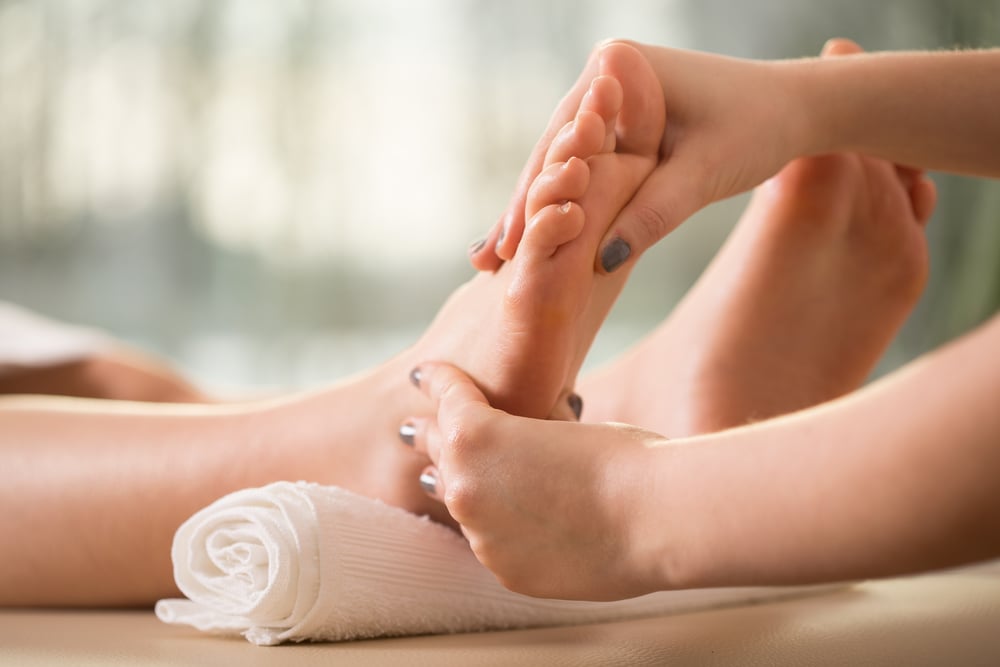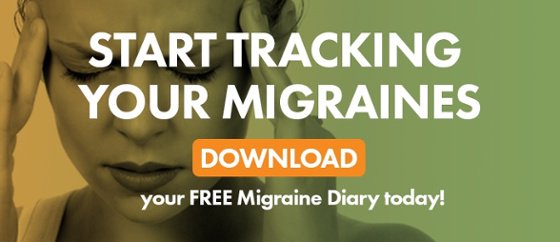
The history of reflexology, or the use of pressure points on the hands, feet, and other areas of the body to treat illness is relatively short in the United States but has been used for millennia throughout Asia. In combination with herbal remedies and conventional medicine, reflexology for migraines can provide effective treatment.
People suffering from various types of pain, including muscle pain, pre-menstrual syndrome and headaches are flocking to reflexology clinics in London. The practice is increasingly in demand here in the U.S. as well.
Before we start talking about the use of reflexology for the relief and prevention of migraines, we would like to emphasize that you should use the same caution in seeking this treatment as you would any other.
- Before trying reflexology, even if it is for self-treatment, migraine patients should consult their primary care physicians. Reflexology is not meant to replace other forms of treatment. In fact, it works better when combined with other holistic therapies such as herbal medicine and yoga.
- If you are pregnant or suffer from hand or foot trauma, certain reflexology methods should be avoided. At the least, you should consult a physician and seek treatment from a professional reflexologist before attempting self-therapy.
Now, let’s see how reflexology works and how it is applied to migraine treatment.
Defining Reflexology and Migraine Treatment
Reflexology is the physiological stimulation of specific points of the body to promote circulation and optimal neurological function. It is considered a holistic therapy thought to benefit health and balanced life.
Several areas of the body are thought to be connected to the internal organs, brain, blood circulation, and nerve function by your life force called the Qi (pronounced chee). The Qi flows through various meridians in the body from the feet to the head.
When the Qi is blocked, a corresponding illness or dysfunction occurs in certain bodily functions. Massaging the appropriate physical region unblocks the flow of Qi and brings the body back into a healthy balance.
When the Qi is not flowing smoothly, physical symptoms arise. In the case of a migraine, the Qi is not moving smoothly throughout the head. Too much Qi gathering in the head causes headaches or migraines with intense stabbing, throbbing, or pounding pain. When the flow of the Qi is low in the head, a chronic, milder, and achy headache occurs.
Migraine relief can be provided by rubbing, massaging, or applying pressure to precise points on the feet and hands.
The Structure of the Human Hand and Foot: a Tutorial
A knowledge of the various parts of the foot is instrumental in determining the acupressure points that are associated with pain in various parts of the head.
- Metatarsals - the long bones running from your toes back to the main part of the foot.
- Phalanges - a fancy name for your toes. Your fingers are also phalanges.
- Forefoot - the bottom part of the foot associated with the metatarsals and phalanges. It includes what we typically call the “ball” of the foot.
- Metacarpals - the long bones in the hand running from your fingers to your wrist.
The foot is home to over 100 moving parts including the bones, tendons, muscles, and ligaments. The acupressure points are named for their association with the internal organs as well as having a traditional Chinese name.
Acupressure and Reflexology Points on the Foot for Migraine Treatment
You may remember from elementary school science that the left side of the brain controls the right side of the body and vice versa. The same holds true for acupressure points. For pain on the left side of your head, massage the reflexology point on the right foot; reverse it for pain on the right side of the head.
For migraines in the temporal area or sides of your head, apply acupressure to the inside surface of the large toe (where it lies against the second toe).
- Massage the point using your thumb to press and rub from side to side, starting at the tip of your large toe and working your way back towards the foot.
- At the base of the toe, pick up your thumb and place it back at the top of the toe and repeat the massaging action.
- Continue the massage for 60 seconds to smooth the flow of Qi and relieve the migraine or headache originating in the temporal area.
The Four Gates include two acupressure points on the feet and two on the hands. A warning about the Four Gates: Do not use these points if you are pregnant. It has been known to induce labor or create other issues.
The foot point is called Tai Chong, also known as Liver 3 (L3) because it is located on the liver meridian of the body. The liver is essential in ensuring the smooth flow of Qi throughout the body. It is located on top of the foot between the metatarsals for the large toe and second toe, near where the bones meet.
- Use your thumb to locate the intersection of the two bones.
- Slide your thumb towards the toes by about a thumb’s width.
- Apply pressure to the depression between the bones for one minute.
The hand point is called He Gu, also known as Large Intestine 4 (LI4) or Union Valley. It is located on top of the webbing between your thumb and index finger. Press the side of your index finger to the side of the thumb. The highest part of the muscle bulge is LI4. Squeeze or press on the area with the opposite thumb for one minute while relaxing the hand you are massaging. It may help to make small circles with the thumb, 10 seconds in one direction and 10 seconds in the other.
The Zu Ling Qi is also labeled Gall Bladder 41 (GB-41) because it is along the Gall Bladder meridian. This point can be very sensitive, and pressure can bring tears to your eyes. Hence the English translation "foot overlooking tears."
When applying pressure, there is no reason to go beyond comfort. It is better to press too lightly than too firmly.
- This point is located at the V formed by the metatarsals for the smallest toe and the toe next to it.
- Just above the intersection is a slight depression between the bones.
- Press and hold for 30 to 60 seconds.
The gallbladder meridian runs through the side of the head and through the forehead, so massaging this point is helpful for pain in these areas. Also, this point is beneficial for relieving headache pain associated with menstruation.
For migraines involving the face, rock your thumb across your large toe starting at the base of the nail. Work your way to the base of the toe and repeat for 30 to 60 seconds. You should feel relief from pain just below the eyes, in the cheeks, the jaw area, and the front of the face.
Wrapping It Up
Reflexology has been practiced for thousands of years, but only caught on in the U.S. within the past century. Acupressure applied to specific places on the body such as the feet and hands can relieve the pain of a migraine.
Before pursuing self-treatment, speak with your primary care physician and consult a professional reflexologist before trying it on your own.



